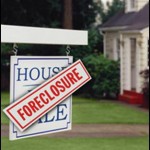Canadian Foreclosure Info Takes Some Digging
Kamloops and area home listings including judicial sales and foreclosed properties click here.

Media reports from the United States routinely list a litany of horrors about the number of foreclosures. According to an August 4 New York Times report, 8.41 percent of subprime-mortgage loans from 2005 were in arrears by 90 days or more or in foreclosure in the month of June. Of subprime-mortgage loans from 2007, 16.6 percent were delinquent, according to the report.
This is creating huge problems for U.S. real-estate lenders, who have to put properties in foreclosure and then find a buyer in a market that is already glutted with distress sales.
Fortunately, in B.C. there haven’t been nearly as many foreclosures, which are legal processes in court to extinguish all rights, title, and interest in an owner’s property so that it can be sold to pay a lien against it.
According to the Canadian Bankers Association, just 0.15 percent of B.C. residential mortgages were in arrears in April, the latest month for which figures are available. This is quite low when compared with other months dating back to 1990. The percentage of mortgages in arrears peaked in May 1999 at 0.66 percent—more than four times the most recent figure.
Vancouver real-estate educator and foreclosure researcher Kap Hiroti told the Georgia Straight in a phone interview that he expects the number of B.C. foreclosures to increase—but only because the numbers are so low. He noted that some high-risk borrowers who’ve previously relied on alternative-financing companies are finding themselves in trouble because those lenders have abandoned the market.
“What that means is that you’ve got people who’ve got a mortgage one or two years ago,” Hiroti said. “They’re coming up for renewal, and that company cannot renew because they pulled out of the market. Usually, they’re very highly leveraged loans.”
Those cases, however, are the exception to the current market norm here. Hiroti pointed out another difference between the U.S. and Canada when it comes to foreclosures: south of the border, information is readily available. In Canada, it’s much more difficult to find data on properties that are about to enter foreclosure proceedings.
ForeclosureList.ca, a Web site owned by Hiroti, does the legwork in digging up information on foreclosures. He explained that a foreclosure typically begins when a lender issues a demand letter to a property owner seeking repayment of a debt. If the borrower doesn’t respond appropriately, the next step is for the lender to file a legal document called a petition in B.C. Supreme Court.
The petition lays out the particulars, and normally asks for a court order quashing the owner’s rights, title, and interest in a property. At this point, the owner has a chance to file a response, which sets the legal wheels in motion. Prior to any judicial rulings, the owner still has control over the property and can usually sell it without obtaining permission from the lender.
Hiroti said his company compiles information from these petitions and distributes it for $99 per month to subscribers, most of whom are real-estate investors. He estimated that there are approximately 20 foreclosure petitions filed in B.C. Supreme Court each week. Doing this research isn’t cheap. In B.C., it costs $8 to research a court file and $1 per page to photocopy documents.
Ordinarily, a judge or a master of the B.C. Supreme Court will issue a decree nisi, which may require owners to pay down the debt within six months. Hiroti said the next step is for a judge or a master to issue an order for the conduct of sale. “That’s where they actually bring a realtor onboard,” he commented.
The agent has to list the property for market value on the Multiple Listing Service. Once an offer is made, the court must approve the sale. It can be a time-consuming process, which is why Hiroti thinks it’s useful for investors to find out about foreclosures much earlier in the process.
So can a buyer get a better deal by approaching a property owner who has just received a petition? “It’s a good question,” Hiroti responded. “There is the potential.”
